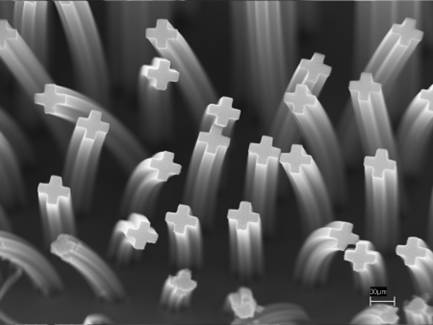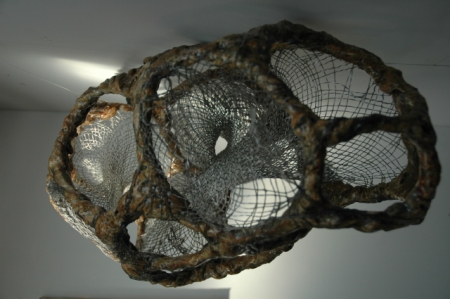The art of making visible the invisible
A new exhibition at Our City O-Tautahi merges art with the atom in an effort to explain nanotechnology.
Nanotechnology, one of the key technologies of the 21st Century, is probably the least understood despite being well on its way to becoming an integral part of our everyday lives.
Now the University of Canterbury and the MacDiarmid Institute for Advanced Material and Nanotechnology, in collaboration with artists and scientists, is offering a better understanding of nanotechnology through art.
Their exhibition: The Art of Nanotechnology at Our City O-Tautahi from Wednesday 11 August through to Friday 10 September presents intriguing nanotechnology images and art inspired by nanotechnology.
Researchers from around New Zealand were asked to enter the most interesting images from their work in a competition, and the best images are displayed in the exhibition. The MacDiarmid Institute for Advanced Materials and Nanotechnology, which is a government-funded Centre of Research Excellence, kindly donated $2000 in prizes.
Alongside these images are works from artists Claire Beynon (in a collaboration with biologist Sam Bowser), Nicola Gibbons, Sue Novell and Robyn Webster. These artists attempt to shed light on the incredible and tiny new worlds of nanotechnology. Each have selected one little corner of a vast subject, and examined it up close, just as a scientist uses a microscope.
Robyn Webster, an artist whose work is showing in the exhibition, says: “We have all found different aspects of the nanotechnology ideas to work with, as artists- sometimes in total collaboration, sometimes standing further back and calling warnings, but always responding with excitement to the potential and pervasiveness of this new and fascinating area of science.”
Exhibition Coordinator, Associate Professor Simon Brown from the University of Canterbury says: “This is a unique project. This is the first time this combination of artists’ and scientists’ views of nanotechnology has been curated in New Zealand.”
“This exhibition combines images and sculptures created by well-known New Zealand artists and images from the research of New Zealand nanotechnologists. They sit side-by-side and allow the public to form their own opinions.”
Professor Brown goes on to say that nanotechnology is seen by different people in different ways.
“For the general public it is largely invisible. For scientists it is exciting because of its novelty and the prospect of new worlds to explore. In the commercial world it holds out hope for new industries, new jobs and enormous economic benefits. For many Non-Government Organisations, it is potentially dangerous, both to human health and the environment, and ethically questionable.”
One nanometre is one billionth of a metre. A normal microscope is not nearly powerful enough to be able to see such small things and so researchers often use electron microscopes, which can “see” things down to a size of about 10 nanometres (that’s 0.one hundredth of a micron or one hundred millionth of a metre) and scanning tunnelling microscopes which can even “see” individual atoms (which are about 0.2nm in size).
Title of Exhibition: The Art of Nanotechnology: Intriguing Nanotechnology Images, and art inspired by nanotechnology
Date: Wednesday 11 August – Friday 10 September
Time: 10am to 4pm Monday to Saturday
Location: Our City O-Tautahi, corner of Worcester Boulevard and Oxford Terrace. Admission free.
Ph: 03 941 7460
www.ccc.govt.nz/ourcity
For related events see: www.canterbury.ac.nz/nanoevents


